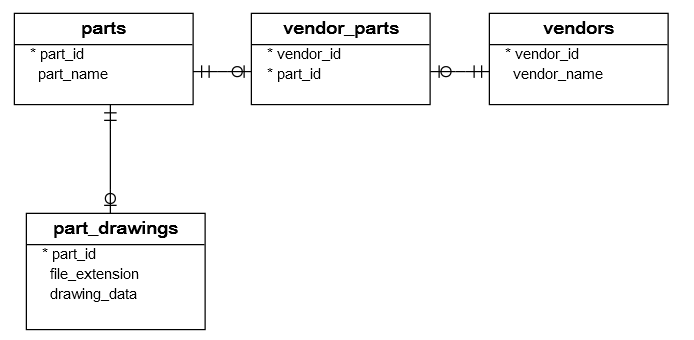How To Create Database In Postgresql Using Python
Summary: in this tutorial, you will learn how to create new tables in the PostgreSQL database using Python.
This tutorial assumes that you know how to write the CREATE TABLE statement. If this is not the case, you should check out the CREATE TABLE tutorial.
Steps for creating PostgreSQL tables in Python
To create a new table in a PostgreSQL database, you use the following steps:
- First, construct CREATE TABLE statements.
- Next, connect to the PostgreSQL database by calling the
connect()function. Theconnect()function returns aconnectionobject. - Then, create a
cursorobject by calling thecursor()method of theconnectionobject. - After that, execute the
CREATE TABLEby calling theexecute()method of thecursorobject. - Finally, close the communication with the PostgreSQL database server by calling the
close()methods of thecursorandconnectionobjects.
Creating tables in Python example
1) Create a Python program
First, create a new file called create_table.py.
Second, inside the create_table.py file, define a new function called create_tables().
The create_tables() function creates four tables in the suppliers database: vendors, parts, vendor_parts, and part_drawings.

Code language: Python ( python )
#!/usr/bin/python import psycopg2 from config import config def create_tables (): """ create tables in the PostgreSQL database""" commands = ( """ CREATE TABLE vendors ( vendor_id SERIAL PRIMARY KEY, vendor_name VARCHAR(255) NOT NULL ) """, """ CREATE TABLE parts ( part_id SERIAL PRIMARY KEY, part_name VARCHAR(255) NOT NULL ) """, """ CREATE TABLE part_drawings ( part_id INTEGER PRIMARY KEY, file_extension VARCHAR(5) NOT NULL, drawing_data BYTEA NOT NULL, FOREIGN KEY (part_id) REFERENCES parts (part_id) ON UPDATE CASCADE ON DELETE CASCADE ) """, """ CREATE TABLE vendor_parts ( vendor_id INTEGER NOT NULL, part_id INTEGER NOT NULL, PRIMARY KEY (vendor_id , part_id), FOREIGN KEY (vendor_id) REFERENCES vendors (vendor_id) ON UPDATE CASCADE ON DELETE CASCADE, FOREIGN KEY (part_id) REFERENCES parts (part_id) ON UPDATE CASCADE ON DELETE CASCADE ) """) conn = None try: # read the connection parameters params = config() # connect to the PostgreSQL server conn = psycopg2.connect(**params) cur = conn.cursor() # create table one by one for command in commands: cur.execute(command) # close communication with the PostgreSQL database server cur.close() # commit the changes conn.commit() except (Exception, psycopg2.DatabaseError) as error: print(error) finally: if conn is not None: conn.close() if __name__ == '__main__': create_tables()
2) Execute the Python program
To execute the Python program, you use the following command:
Code language: CSS ( css )
python create_table .py
3) Verify the table creation
First, log in to the PostgreSQL database server using the psql program.
Second, use the \dt command to display the table list from the suppliers database.
Code language: PHP ( php )
suppliers=# \dt List of relations Schema | Name | Type | Owner --------+---------------+-------+---------- public | part_drawings | table | postgres public | parts | table | postgres public | vendor_parts | table | postgres public | vendors | table | postgres (4 rows)
As you see can see clearly from the output, we have four tables created successfully in the suppliers database.
If you use other client tool like pgAdmin, you can view the tables via the table list under the public schema.
In this tutorial, you have learned step by step how to create new PostgreSQL tables in Python using psycopg database adapter.
Was this tutorial helpful ?
How To Create Database In Postgresql Using Python
Source: https://www.postgresqltutorial.com/postgresql-python/create-tables/
Posted by: smallhealf1997.blogspot.com

0 Response to "How To Create Database In Postgresql Using Python"
Post a Comment